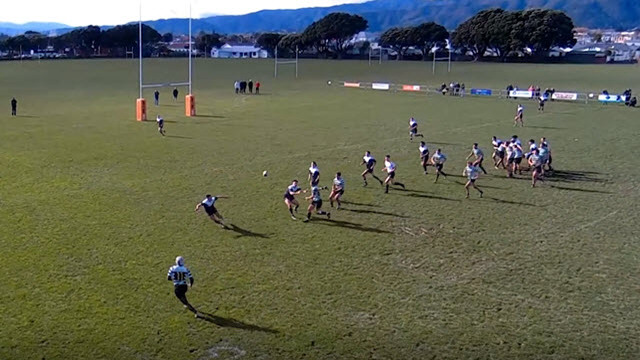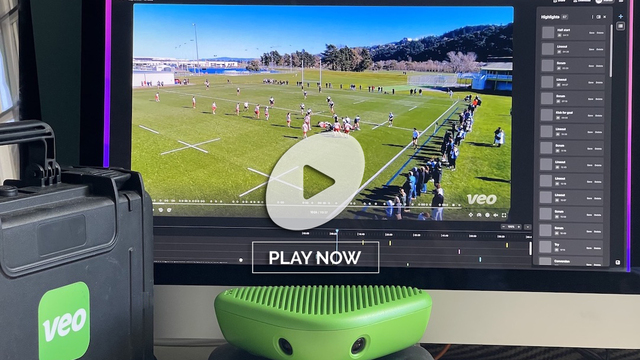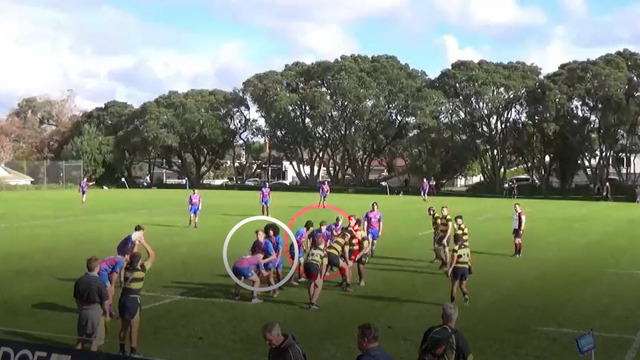A midfield scrum or one with a 15m+ blindside is one of the hardest set pieces to defend.
A split of defenders is required on either side of the Scrum. How many do you load on each side? What role does the no 9 play in the defence screen? What lines do the loose forwards run? Just some of the decisions the defence must answer and Community Coaches must prepare and plan for with much less time than professional coaches have available to them.
From a Midfield scrum, scrum dominance is the 1st line of defence, as Sir Graham Henry (Ted) outlines in his Master of Defence video and its remix series Master Defence
(one of the most popular video series on the Rugby Site).
However, what happens when scrum dominance does not occur for the defensive side which is often the case especially in Community Rugby? A recent match between Producer Warren’s undefeated Petone U21 and OBU in Wellington, NZ under 21 competition highlights this point, with both teams mirroring their defensive scrum mistakes.
In the 1st instance, as seen from the fixed VEO camera footage, OBU (in the stripes) wins possession with a dominant scrum moving the ball left.
As the play develops, notice how the OBU’s inside attack is close together and the Petone’s (in blue and white), inside backs 10, 12, and 13 target the 2 OBU players.
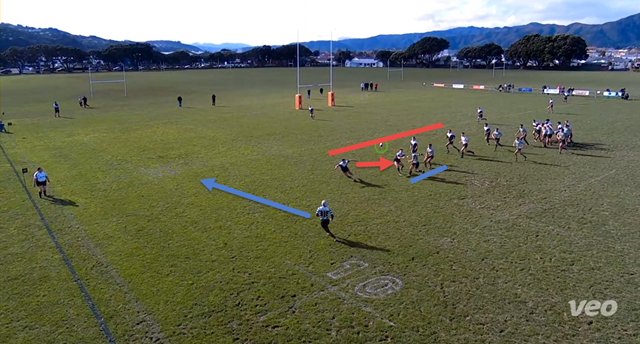
The result is an overlap for OBU and a try is only prevented by the Petone no 9 running a covering line.
As Ted says ‘your defence needs philosophy’ and ‘a policy of who is defending who in the attack in each situation’. During the Line Defence from a Scrum video, Ted also highlights ‘the importance of communication and swivel to watch the defender’.
Even from the camera distance, it is evident the Petone’s defence is not communicating with no arms movement or voices being heard. Plus, all the defending players were ball watching and did not locate their defenders.
This resulted in 4 defenders on the 2 inside attack backs and a clear overlap for the OBU no 11.
These defensive mistakes are replicated by the OBU backline defence in the 2nd video.
On this occasion OBU had the dominant scrum but failed to align its defense. The OBU no 9 remained on the blind side of the scrum and not part of the open side defence and the no 7 breaks too late to be effective in the defence line.
The result is 3 OBU defending 4 Petone backs and the OBU no 11 getting fixed on the Petone 13 with the clear overlap for the Petone 14.
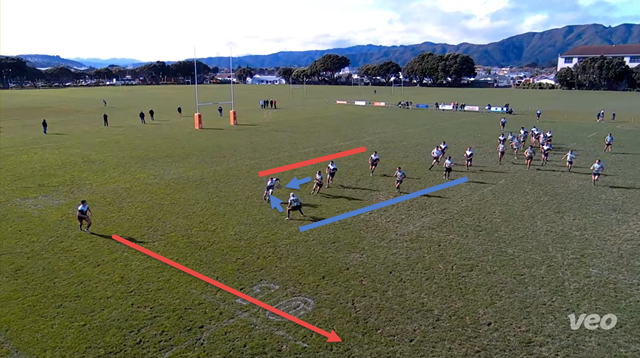
As in previous example, from the wide VEO camera view, the OBU defence was neither communicating nor watching their opponents, leading to a fixed and staggered man on man defence rather than a sliding connected defence play and giving up an easy overlap in the outside channel.
In Summary
You could argue that positive attack play with excellent skip passes by both teams resulted in the gain line advantage.
However the advantage gained was magnified by both teams missing key elements in their defensive setup, a common mistake in community level rugby.
As Ted, states in his Line defence – when down on numbers in defence video – Down on Numbers, it is important that a defender is not taken out of play by an attacking player by over committing.
Which in both instances the defences were guilty of.
For community coaches, (at any level), understanding and improving these areas of play can be easily achieved.
1. Using inexpensive equipment such as VEO cameras, coaches get the opportunity to view play from a wider and more consistent platform and gain a greater understanding of how the team-based attacks and defences are operating;
2. Either via your own knowledge or getting experts to review footage like The Rugby Site’s MCR service – MCR; and
3. Coaches can then access the Rugby Site video content to understand the aspect of play better and then apply it at training.
